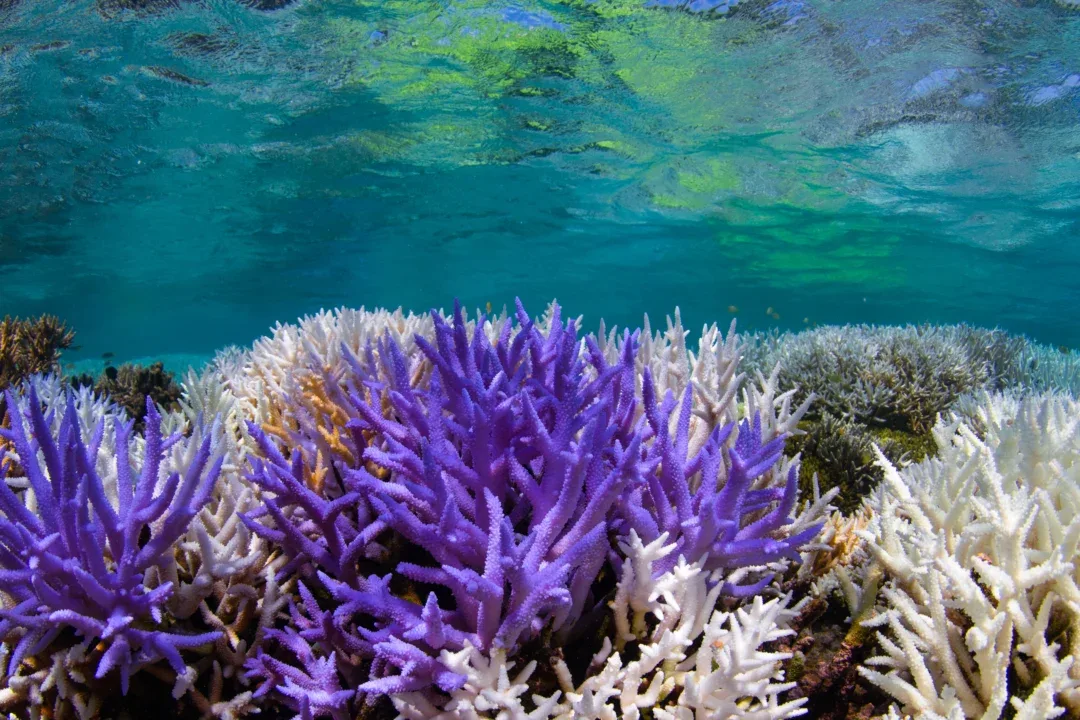Bleaching is the process by which corals lose their symbiotic algae, Zooxanthellae, that give them their distinctive colours and main energy sources, due to environmental stressors. Thus a bleached coral appears pale or white, and are more susceptible to disease and death. But bleached corals are not dead corals and can recover.

NOAA: What is Coral Bleaching? Infographic (10/04/23). Download in English (.pdf)
First observed in the early 1980s, mass coral bleaching has become one of the most visible and damaging marine ecological impacts of persistently rising ocean temperatures. Bleaching is the process by which corals lose the symbiotic algae that give them their distinctive colors and main energy sources. If a coral is severely bleached, disease and death become likely. Severe coral bleaching has become more extensive, frequent, and intense. This can be seen in the acceleration of heat stress events that cause mass bleaching, and in new multi-decadal bleaching observation datasets. As manifested by the devastating 2014-2017 global coral bleaching event (now considered the longest, most widespread and most damaging coral bleaching event on record), mass bleaching events around the globe are often lasting many months; are becoming an annual event; and are impacting coral reefs that never bleached before. It’s clear that remotely monitoring coral reefs and providing actionable intelligence are critical for early detection, on-the-ground response, communication, and enhancing coral reef resilience in a rapidly warming world. [1]
What happens when corals bleach? And are all corals the same?
Coral bleaching is a phenomenon that occurs when corals lose their vibrant colors due to stress. A coral holobiont or coral for short, is essentially made up of an animal (polyp), symbiotic photosynthetic algae (zooxanthellae), and microorganisms (bacteria, archaea, fungi, and viruses). When bleaching occurs, corals expel the colorful zooxanthellae living in their tissues, revealing the white calcium carbonate skeleton underneath, hence the term “bleaching”. When bleaching occurs, corals are left without their main energy source (nutrients). They are more vulnerable to disease and will starve to death unless conditions improve and the zooxanthellae return. Coral polyps, even those within the same colony, may react to heat stress in different ways. Some parts of a coral may pale, others may bleach entirely, and some may appear normal. Some corals may even produce bright, fluorescent pigments. [2]
Both hard, or reef-building, corals (those that secrete a calcium carbonate skeleton) and soft corals (more flexible animals made up of fibrous proteins) can bleach. However, there are some reefs around the world that may appear to harbour more thermal-resistant corals that can tolerate more challenging environmental conditions, including higher sedimentation rates and fluctuating temperatures (such as the northern Red Sea basin, and areas in the East Asia seas and the coral triangle).
The sensitivity and susceptibility of corals to bleaching may vary based on the conditions to which a reef has adapted, its species composition, and reef zonation. Species responses may also vary by morphology (coral form) or phenotypic plasticity (the ability to change certain traits due to its environment) [2]

The bleaching timeline and need for post-bleaching monitoring
During ICRI’s #ForCoral Webinar Series, as part of the webinar “Recent Coral Response Events and the Need for Integrated Response Planning“, Derek Manzello, NOAA Coral Reef Conservation program, highlighted the need for post-bleaching monitoring and provided insights into the bleaching continuum. Watch Derek’s presentation below.

